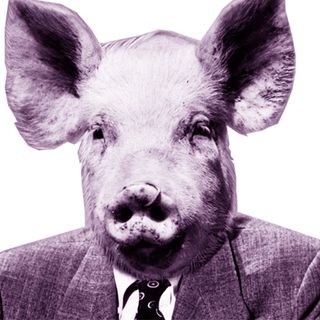
On Screen, Women in Leadership Roles Are Four Times as Likely as Men to Be Shown Nude, Finds New Report
More often than not, these female characters are written, directed and produced by men, concluded a global analysis of film.

Women characters in positions of leadership were four times more likely than similar male characters to appear completely nude in movies, according to a new report on gender bias in films by the Geena Davis Institute on Gender and Media.
When female characters were depicted as bosses, they were more likely than male boss characters to appear partially nude, wear revealing clothing, be sexually objectified by the camera and sexually objectified by other characters’ dialogue, and be shown experiencing sexual harassment, concluded “Rewrite Her Story,” which evaluated the gender, screen time and leadership portrayal of male and female characters in 56 top-grossing films of 2018 from 20 countries, including the U.S. and India.
The report doesn’t name specific films (the Institute has a policy not to confront any specific production house) but it’s likely the analysis included at least some of India’s highest-grossing 2018 films, such as 2.0, Sanju, Padmaavat, Race 3, Sarkar, Baaghi 2, Badhaai Ho and Thugs of Hindostan.
At the same time, women leaders on the screen were more likely than male leaders to be portrayed as hard-working and intelligent. (Perhaps reflecting the implicit acceptance by society that women must work harder to overcome many gender-specific obstacles just to achieve the same degree of success as men.)
The report also found male characters were twice as likely to be portrayed in a leadership role than female characters. And male characters, leaders or otherwise, spoke twice as many lines as female characters.
Related on The Swaddle:
Women In Power Scare Us More Than We Will Openly Admit
Perhaps more importantly, it sought to understand how these imbalanced, gendered portrayals are perpetuated, as well as their impact on girls and women watching these films. To the first point, the report found a significant dearth of women involved in the creation of any of these films: no film analyzed had been directed by a woman; only one in four films analyzed had at least one female producer; and, only one in 10 films analyzed had at least one woman on the writing team.
To the second point, it’s heartening to see that girls all over the world are picking up on the disparity of portrayals offered to them. Some of the comments from India’s young, female viewers included: “When he was investigating the case he would never take a step back but he wants his wife to take her step back … that shows that he has superiority over her.… It shows masculine behavior, he shows authority over his wife. She needs to compromise around her career but he does not,” the report quoted a 20-year-old Indian woman discussing the 2017 film Vikram Vedha. The report also analyzed what girls perceive of other pervasive media, such as advertisements — and again, today’s young women are onto the disparity: “Girls are used as a commodity or brand in advertisements,” the report quotes another young Indian woman. “Males are always dominating in business as names of only males are displayed on boards,” said another.
Related on The Swaddle:
U.K. Bans Advertisers From Using Gender Stereotypes to Market Products
Hot on the heels of the report’s release, actress and advocate Geena Davis announced her eponymous Institute would be partnering with Walt Disney Studios on a new initiative to use artificial intelligence to review film and TV scripts for gender bias.
Called GD-IQ: Spellcheck for Bias, the machine learning tool will preemptively run a similar analysis as the broader report, checking individual scripts for male-to-female character ratio, diversity of characters (determined by representation of men, women, people of color, queer people, people with disabilities, and more), and the number of speaking lines, sophistication of language and portrayals of power designated to male, female and minority characters.
“Here’s my theory of change,” Davis said in her keynote speech at the Power of Inclusion Summit in New Zealand, where she announced the partnership, according to The Hollywood Reporter. “There’s one category of gross gender inequality where the underrepresentation of women can be fixed absolutely overnight — and it’s onscreen. The very next project somebody makes — the next movie, TV show — can be gender-balanced. We can make this change happen very fast. In the time it takes to create a new show or a new film, we can present a whole new vision of the future. Yes, there are woefully few female CEOs in the world, but half of them can be female onscreen immediately. How are we possibly going to get the number of women and girls interested in STEM careers that we need for science, technology, engineering and math? There can be droves of women in STEM careers now on TV and in movies, and then it will happen in real life.”
Liesl Goecker is The Swaddle's managing editor.
Related


The Revolutionary Origins of the Term ‘Male Chauvinist Pig’
